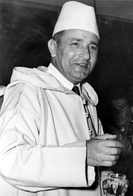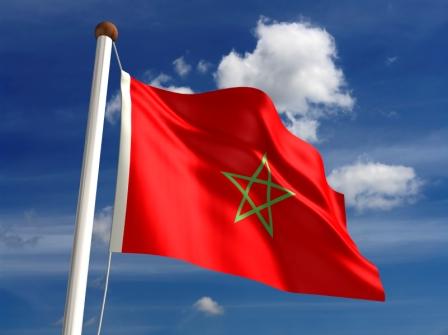Beginning in the year of 1920,
nationalism began to arise among the people of Morocco. While Morocco was under control of France and Spain, nationalist made several attempts to get independence for their country. The Rebellions made by the people of the Rif Mountains were ultimately unsuccessful. After defeating Abd-el-Krim, the French and Spanish were able to control the nationalists for a couple decades until independent movements began again. In the year 1944, nationalists formed an independence party called the Istiqlals, which challenged colonialism. The Istiqlals issues a manifesto, which was a public declaration of their intentions and opinions. In response, the French, who were unhappy with the Istiqlal Party, arrested all of the leaders of the group and accused them of working with the Germans. Also, the French fired on people gathered in Fez. Later, in December of 1952 there were riots in the city, Casablanca. The riots caused the resident general to ban the Istiqlal and the Moroccan
Communist Party. A year later, the French made a big mistake by exiling Sultan Mohammed V to Madagascar. In the Sultan's place Mohammed Ben Aarafa took over. Mohammed Ben Aarafa was not well-liked by the Moroccans. Nationalists who liked Mohammed V and saw him as a religious leader were angered by France's actions. This led to revolts and opposition from the Moroccan citizens if the form of
terrorist acts and armed movements against the French. Finally, in 1955 the French government exploded in Morocco. The Sultan was able to return from his exile on November 16, 1955. Then, in 1956, the French left Morocco and Morocco became independent
(HISTORY OF MOROCCO, Historyworld.net; Independence Movements: Morocco, Algeria, Tunisia and Madagascar to 1947, Fsmitha.com; Morocco, Encyclopedia Britannica Online).
It was on March 2, 1956 that Morocco was able to gain its independence from the French Protectorate. After the French left Morocco, the Spanish did the same. In April, the region of Morocco under the Spanish protectorate was freed. Also, Tangier, which was given international status, became apart of Morocco again in October. After 44 years of colonization Morocco was finally an independent country again
(History of Morocco to the Present Day, Moroccansands.com).
Although Morocco gained its independence in 1956, Spain still colonizes two parts of Morocco to this day. The cities of Ceuta and Melilla and a small chain of islands of the coast in the Atlantic ocean are still under the control of Spain. The Spanish had taken over Melilla in 1497 and got Ceuta in 1580. When Spain gave up the protectorate in Morocco, they did not give up these parts of Morocco. Ceuta and Melilla are two cities in dispute between Spain and Morocco. Moroccans consider the cities to be apart of Morocco while the Spanish say that it is Spain's property and Spanish people already settled there before the Moroccans did
("Ceuta and Melilla: The Last European Colonies in Africa." Examiner.com).

No comments:
Post a Comment